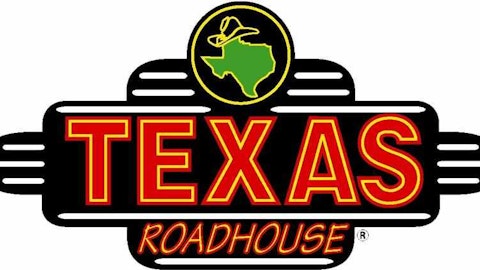Most people who dine at Texas Roadhouse Inc (NASDAQ:TXRH) don’t associate it with Clarksville, Indiana. However, without the first Texas Roadhouse opening in this small town (population 22,000) in 1993, Texas Roadhouse Inc (NASDAQ:TXRH) wouldn’t be what it is today. Success at that one location is what spurred the company’s growth. Today, there are 405 Texas Roadhouse Inc (NASDAQ:TXRH) locations across 48 states and two countries, and this is just the beginning.
Company strategy
Of those 405 restaurants, 315 are wholly-owned, 15 are majority-owned, and 75 are franchised. Texas Roadhouse Inc (NASDAQ:TXRH) aims to add to these numbers.
So far this year, 10 restaurants (plus three franchisee locations) have been opened, and 18 more restaurants (plus two franchisee locations) are set to open by year end. This demonstrates a methodical approach to an increased store count, which should be looked at as a positive by investors.
Texas Roadhouse Inc (NASDAQ:TXRH) is well aware of its fierce competition, including Bloomin’ Brands Inc (NASDAQ:BLMN)’s Outback Steakhouse. Texas Roadhouse attempts to plan accordingly by researching the employment level, average income level, overall population, and nearby shopping and entertainment offerings at potential locations.
The average expense for opening a new location in 2012 was $3.9 million. That number is expected to remain the same or increase slightly for 2013. However, based on the company’s consistent top-line growth, any small increase in this expense should be overcome. In regards to franchisees, Texas Roadhouse Inc (NASDAQ:TXRH) is also strategic, only offering locations to experienced restaurant owners or those with other industry success and knowledge.
Additionally, Texas Roadhouse is looking to expand overseas, with three restaurants already open in the Middle East, and three minority-ownership non-Texas Roadhouse restaurants in China.
On a domestic level, Texas Roadhouse aims to drive repeat traffic by offering high-quality food at fair prices and friendly service; hence the slogan, “Legendary Food, Legendary Service.” In order to drive new traffic, Texas Roadhouse will rely primarily on marketing, with a focus on speed of service and added seats for comfort.
The company expects to be able to maintain or increase profitability in the near future, made possible by managing commodity inflation and value offerings. This is impressive considering reduced discretionary spending by consumers, which, when combined with rising food costs, has led to pricing pressure.
Comps
Nothing is more important than comps for restaurant chains and retailers. Comps don’t include new-location results, which tend to see higher sales due to consumer excitement. Only a certain percentage of those consumers return over the long haul, those who become known as loyal customers. For Texas Roadhouse, comps are based on locations open at least 18 months.
In the second quarter, comps improved by 4.5%, which is identical to the comp growth seen in the year-ago quarter. In the current economic environment, this is impressive, as most restaurant chains are seeing declining comp growth.
For instance, the aforementioned Bloomin’ Brands Inc (NASDAQ:BLMN) saw comps decline to 2% from 2.4% in the year-ago quarter. On the other hand, its only brand to see increased comp growth of 2.8% from 2.3% in the year-ago quarter was Outback Steakhouse — a direct competitor to Texas Roadhouse.
Bloomin’ Brands Inc (NASDAQ:BLMN) is also attempting to strengthen the Outback name, the company’s largest brand and best performer. This will be done via remodeling, marketing, and menu innovation. And Bloomin’ Brands Inc (NASDAQ:BLMN) will attempt to grow overseas. Therefore, these two companies might be competing for a long time to come. However, there are some significant differences between them.
Financials
While Bloomin’ Brands Inc (NASDAQ:BLMN) turns more investor dollars into profit, with a return on equity (ROE) of 51.3% versus 14.6% for Texas Roadhouse, Bloomin’ Brands Inc (NASDAQ:BLMN) isn’t as efficient at turning revenue into profit, sporting a net margin of less than 3.0 versus 5.9% for Texas Roadhouse.
Texas Roadhouse also yields 1.9%, whereas Bloomin’ Brands doesn’t pay a dividend. And based on Texas Roadhouse’s debt-to-equity ratio of just 0.1, the dividend appears to be very safe. Despite not paying a dividend, Bloomin’ Brands has a debt-to-equity ratio of 3.7. Therefore, if both companies are looking to expand, Texas Roadhouse should be able to do so with more ease.
A higher-end alternative
Some investors considering Texas Roadhouse might also look at Ruth’s Hospitality Group, Inc. (NASDAQ:RUTH), owner of Ruth’s Chris Steak House. While Texas Roadhouse’s stock has appreciated 105% over a three-year period, Ruth’s stock has skyrocketed 270% over the same time.
Ruth’s Hospitality Group, Inc. (NASDAQ:RUTH) is similar to Texas Roadhouse based on several key metrics. For instance, it trades at 22 times earnings versus 23 times earnings for Texas Roadhouse. Ruth’s also has a net margin of 4.8%, an ROE of 24.4%, a debt-to-equity ratio of 0.4, and it yields 1.3%. Furthermore, comps jumped 4.6% in the second quarter thanks to a 2.5% increase in the average ticket, a 2.1% increase in entrees, and more foot traffic.
Since it’s a high-end restaurant, this foot traffic partially stems from improved capital positions for many people who have invested in the stock and real estate markets over the past several years. As you might have heard, this has been deemed a 5% recovery, indicating that only 5% of the population has actually improved their financial situation.
This is good news for now, but it makes Ruth’s more susceptible to downside equity and real estate market-moves. Look at the chart below and focus on 2008 and 2009 as an example. Also, notice that Texas Roadhouse has outperformed Ruth’s over the long haul.

Texas Roadhouse data by YCharts
Conclusion
Texas Roadhouse looks to be the best long-term investment option of the three aforementioned companies. On the other hand, Texas Roadhouse still relies on discretionary spending, which isn’t likely to see growth in the near future. The good news is that Texas Roadhouse is likely to hold up better than most restaurant chains. Therefore, if you’re interested in an investment, consider doing so at a very slow and incremental pace, buying on dips if they occur.
The article Legendary Food, Modest Expectations for This Restaurant Chain originally appeared on Fool.com and written by Dan Moskowitz.
Dan Moskowitz has no position in any stocks mentioned. The Motley Fool recommends Texas Roadhouse.
Copyright © 1995 – 2013 The Motley Fool, LLC. All rights reserved. The Motley Fool has a disclosure policy.






